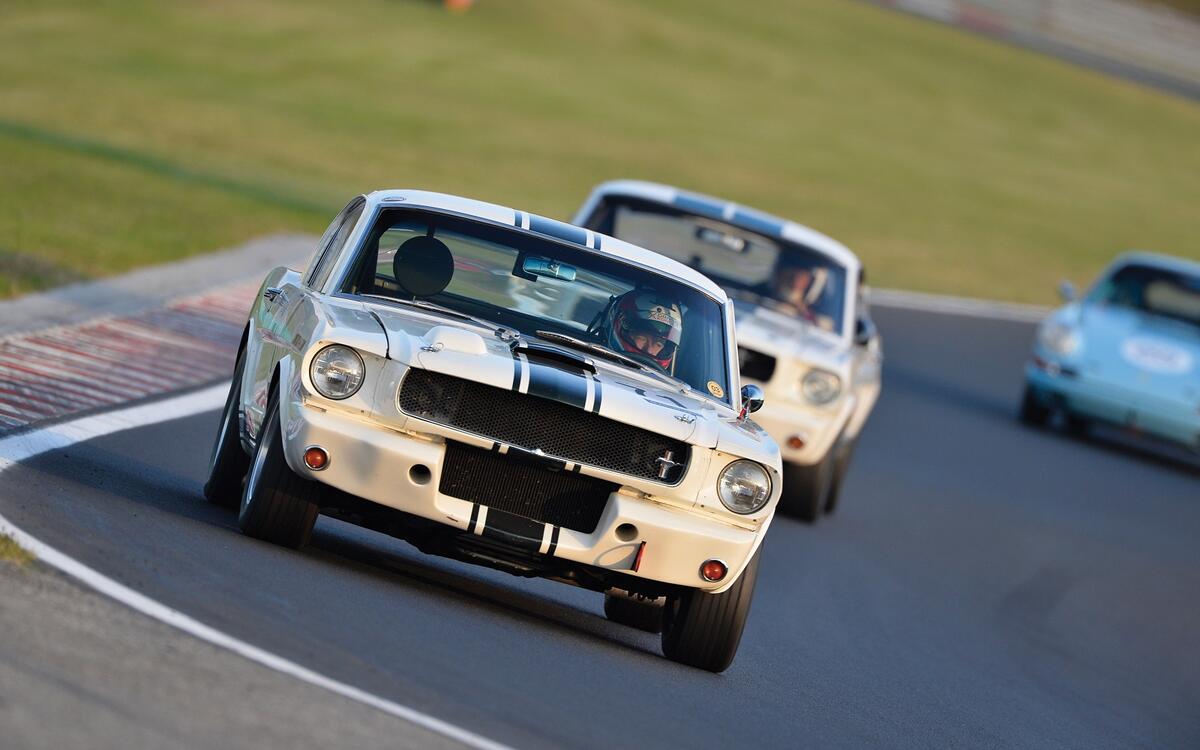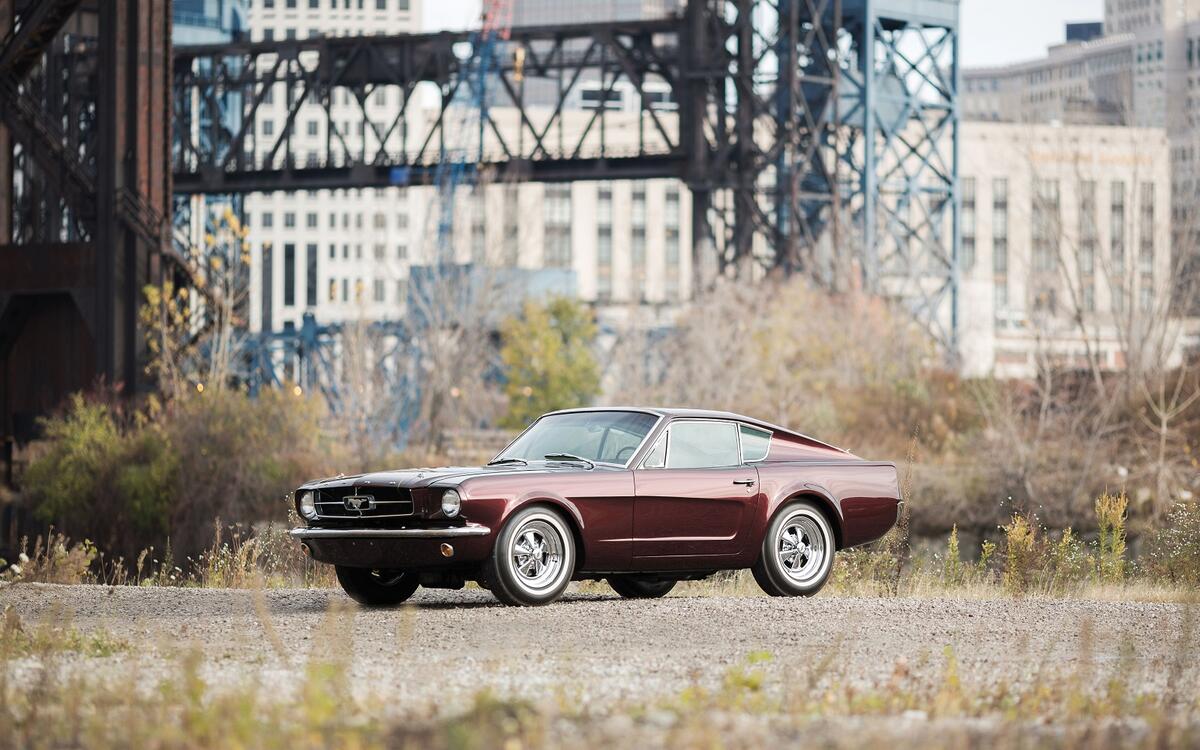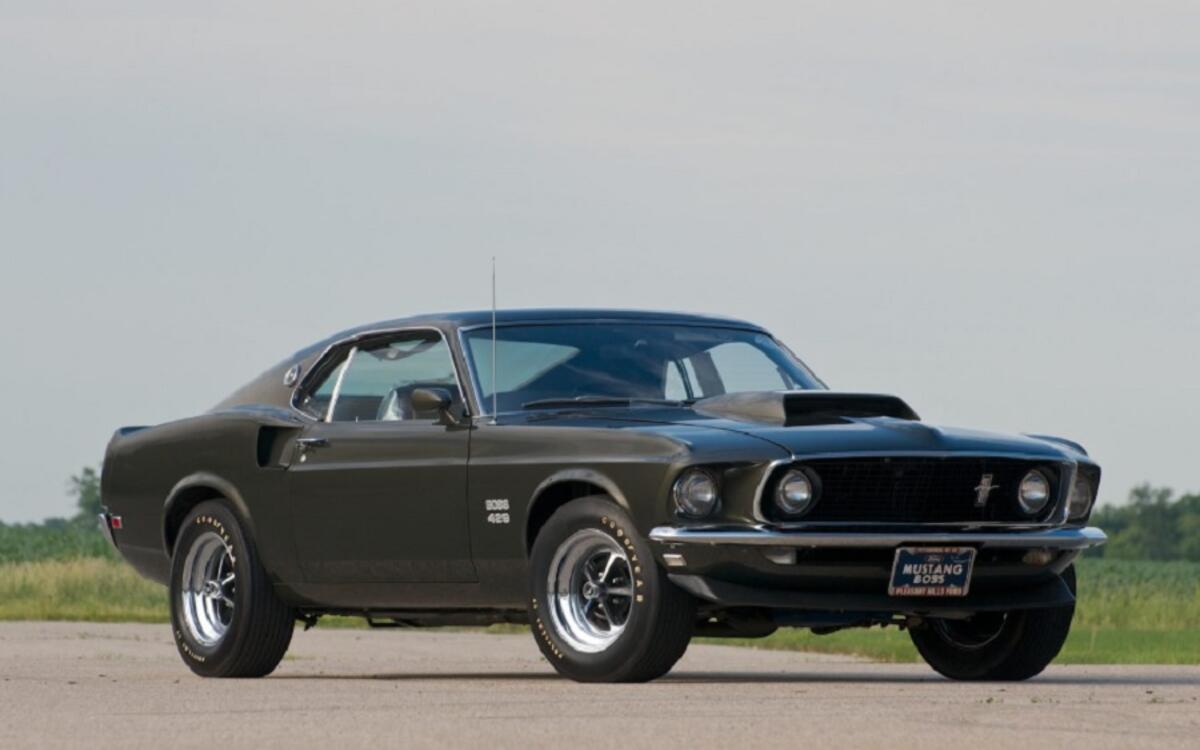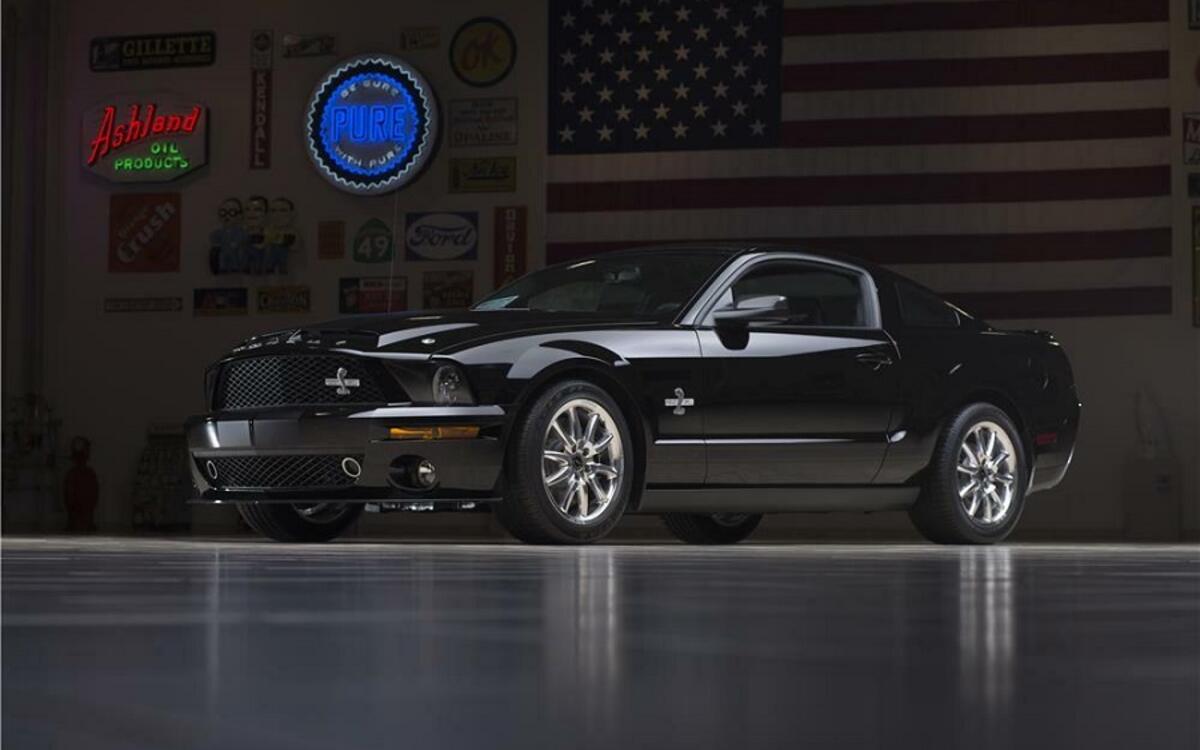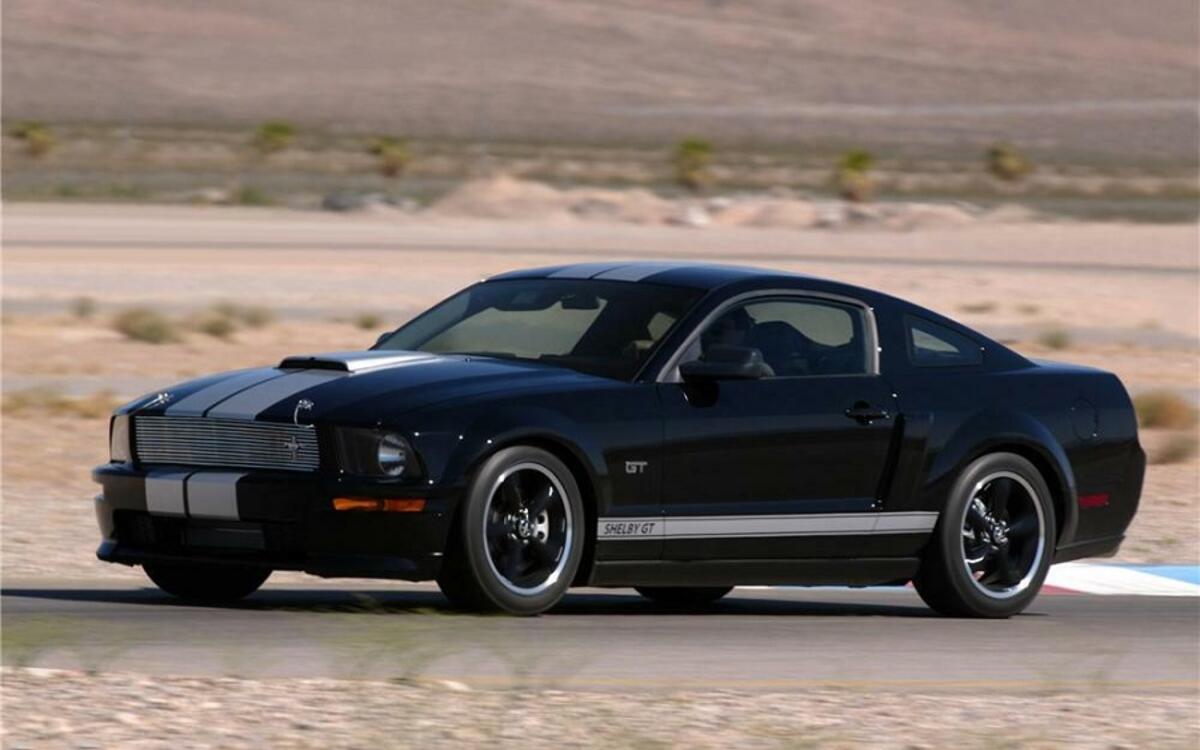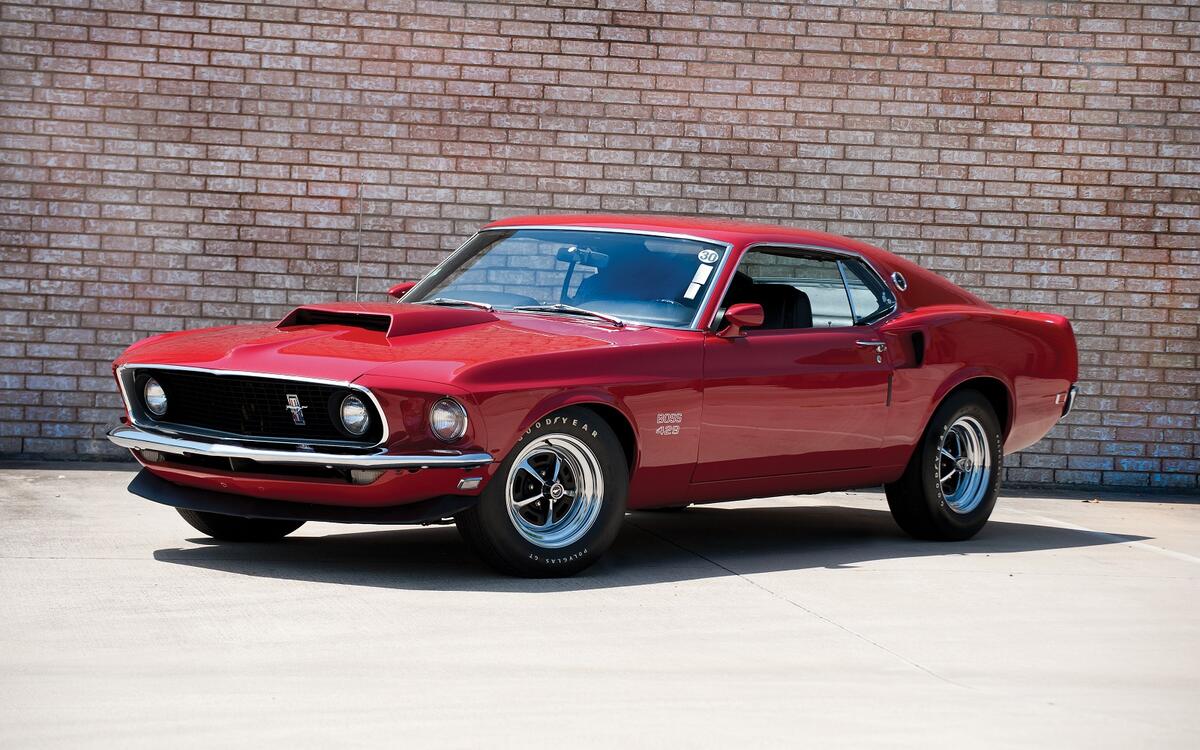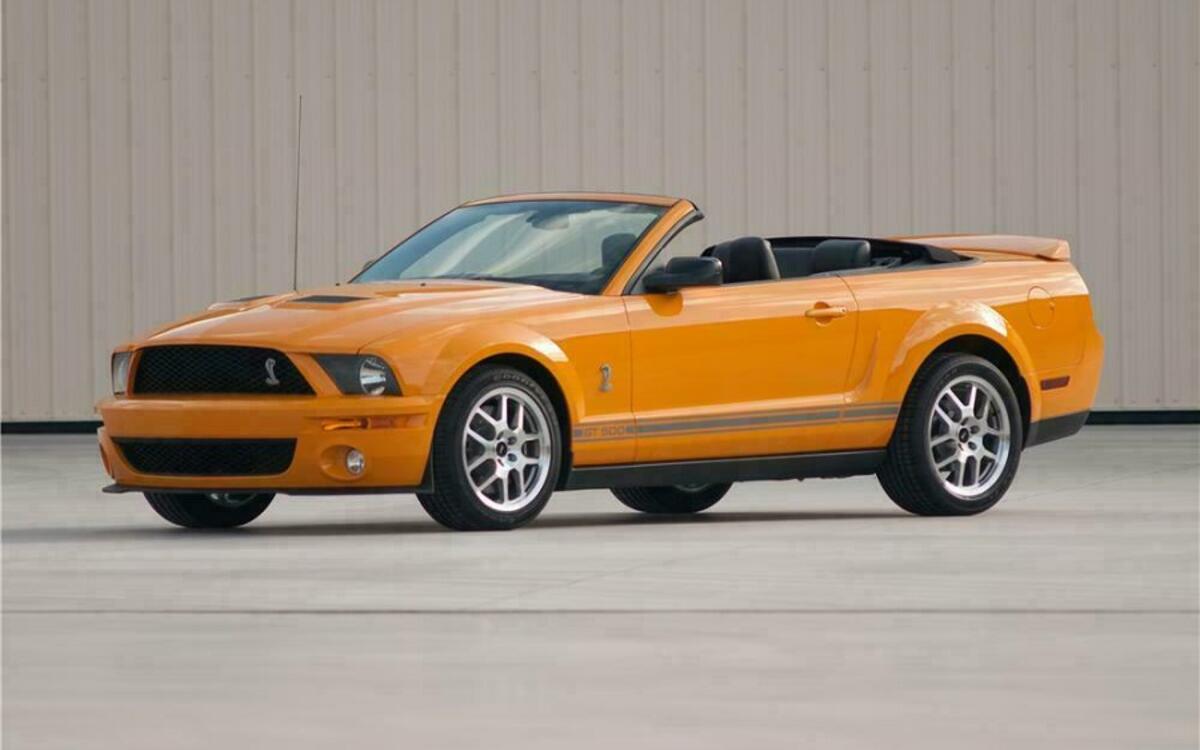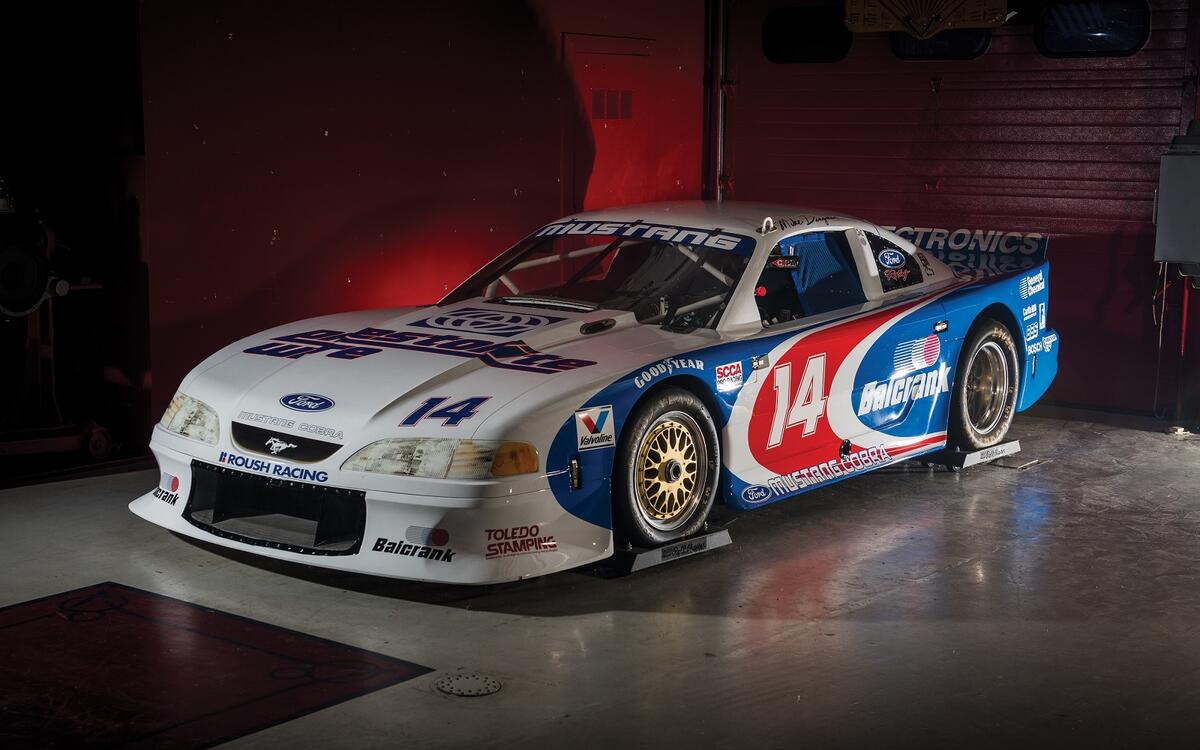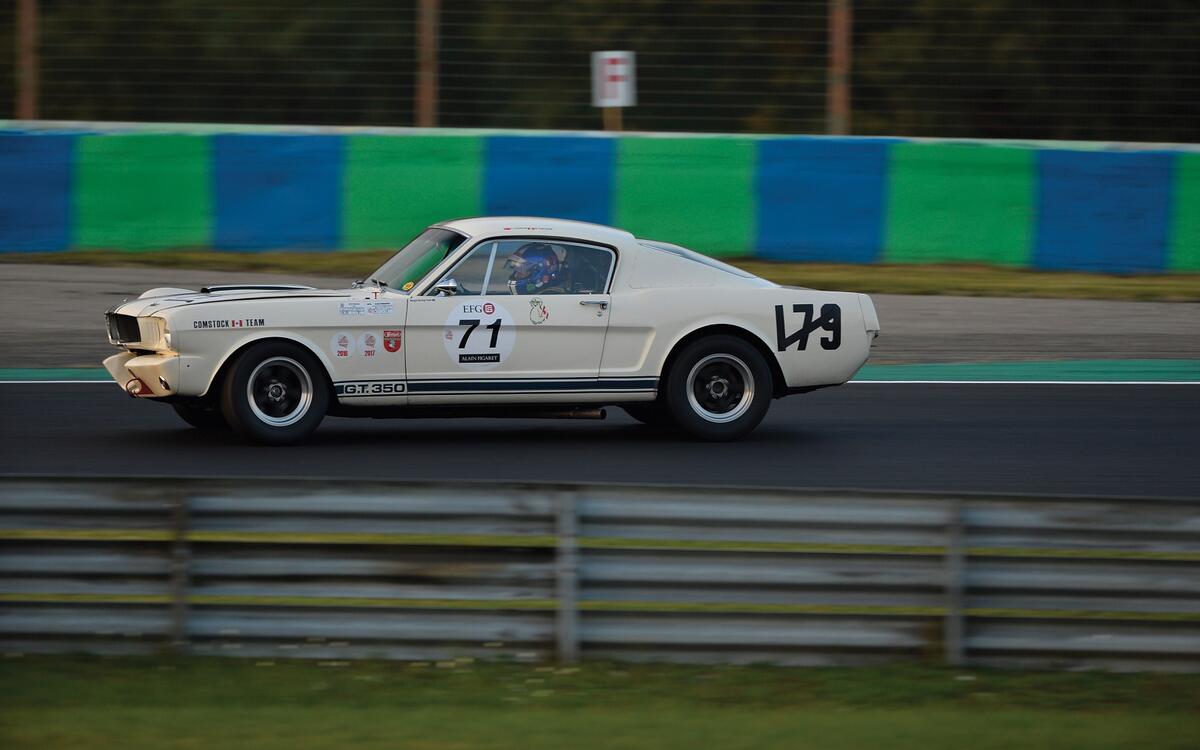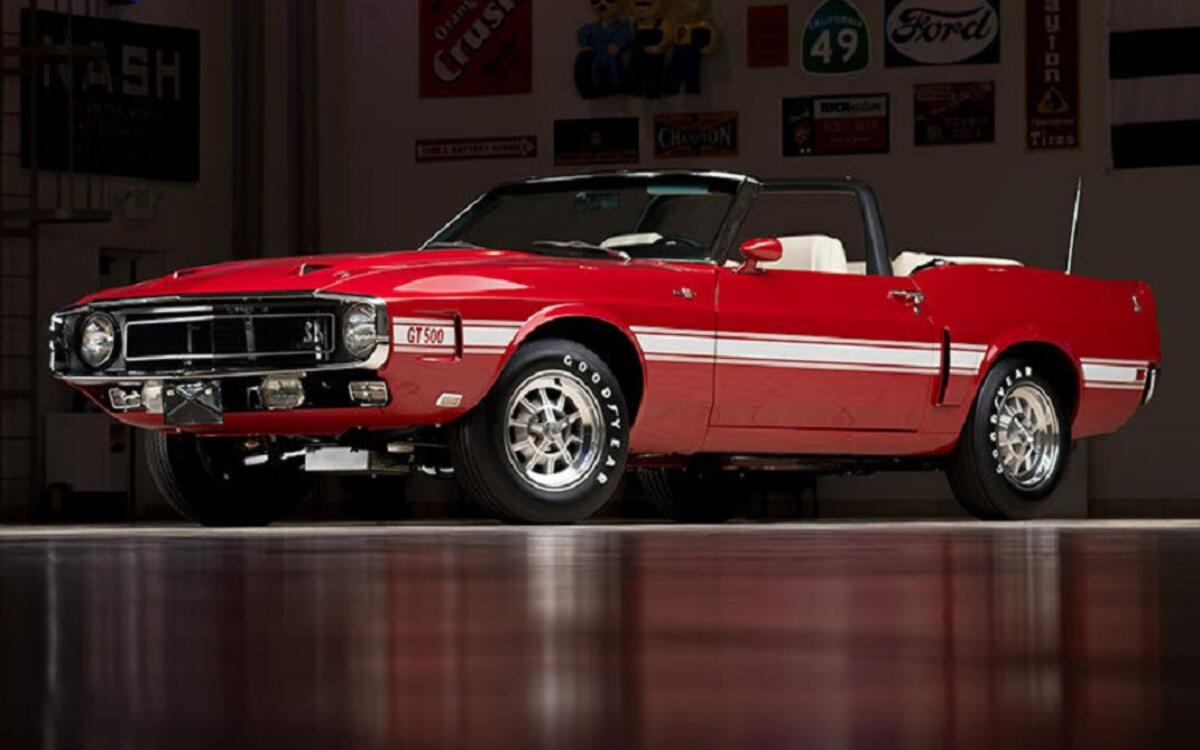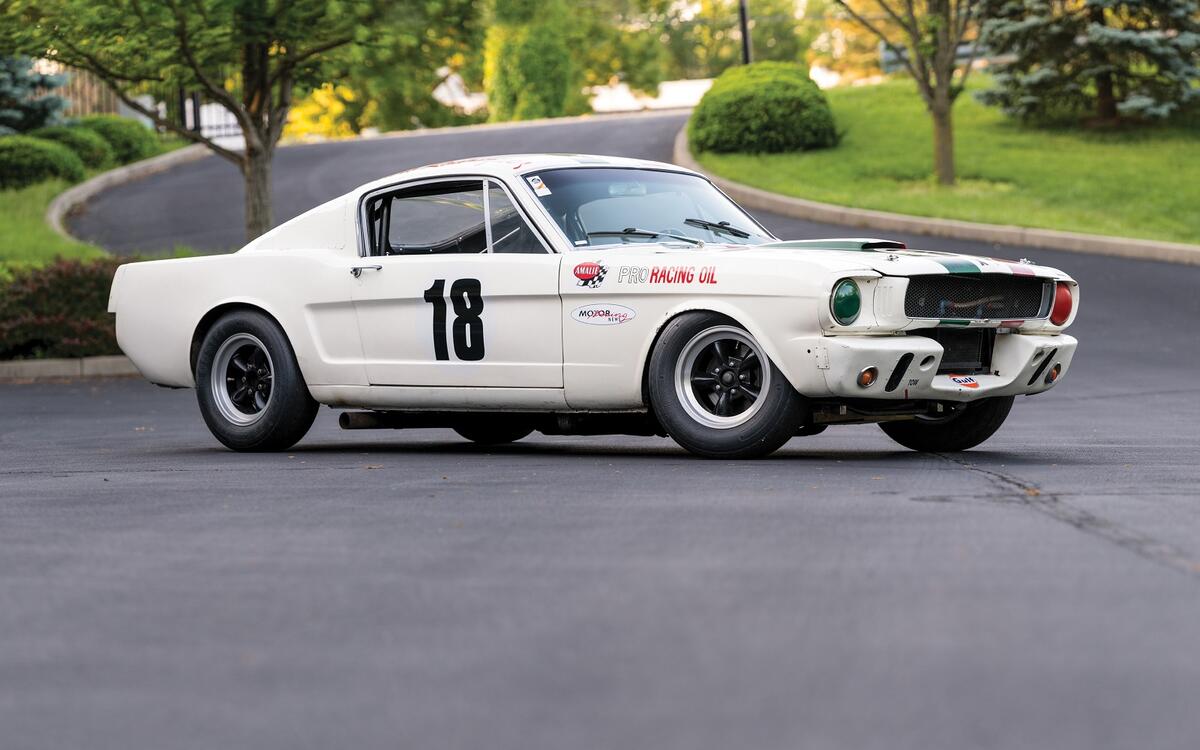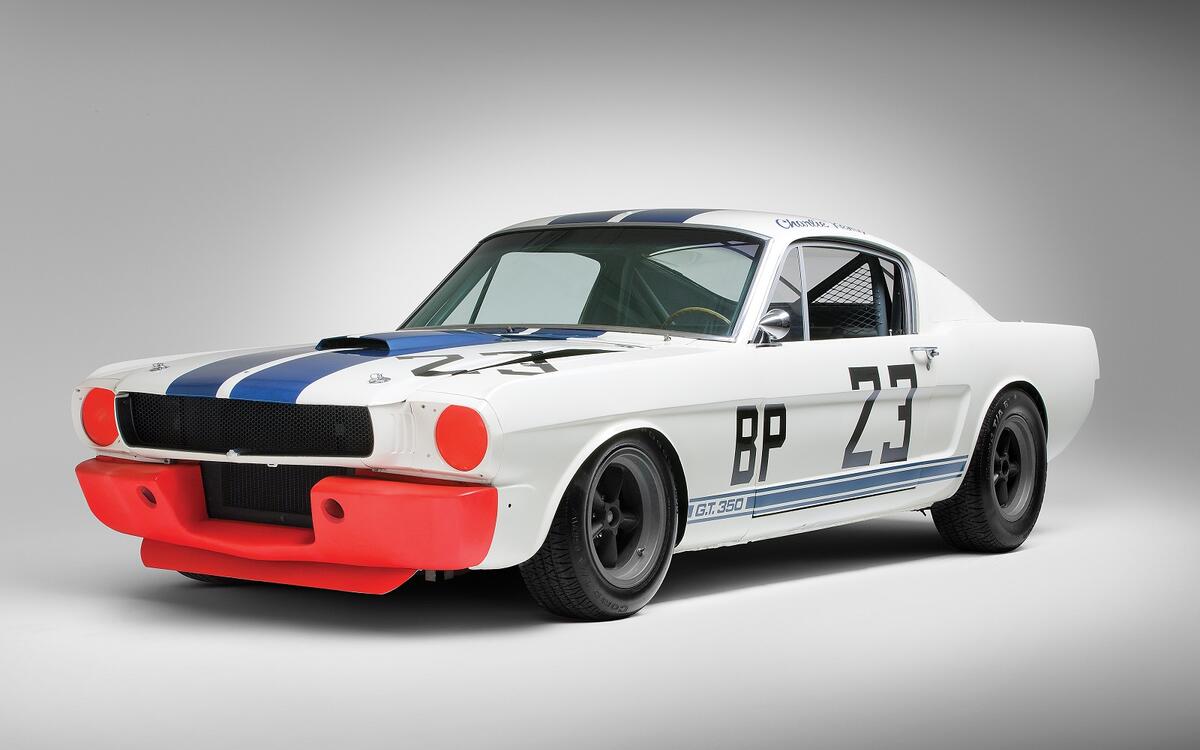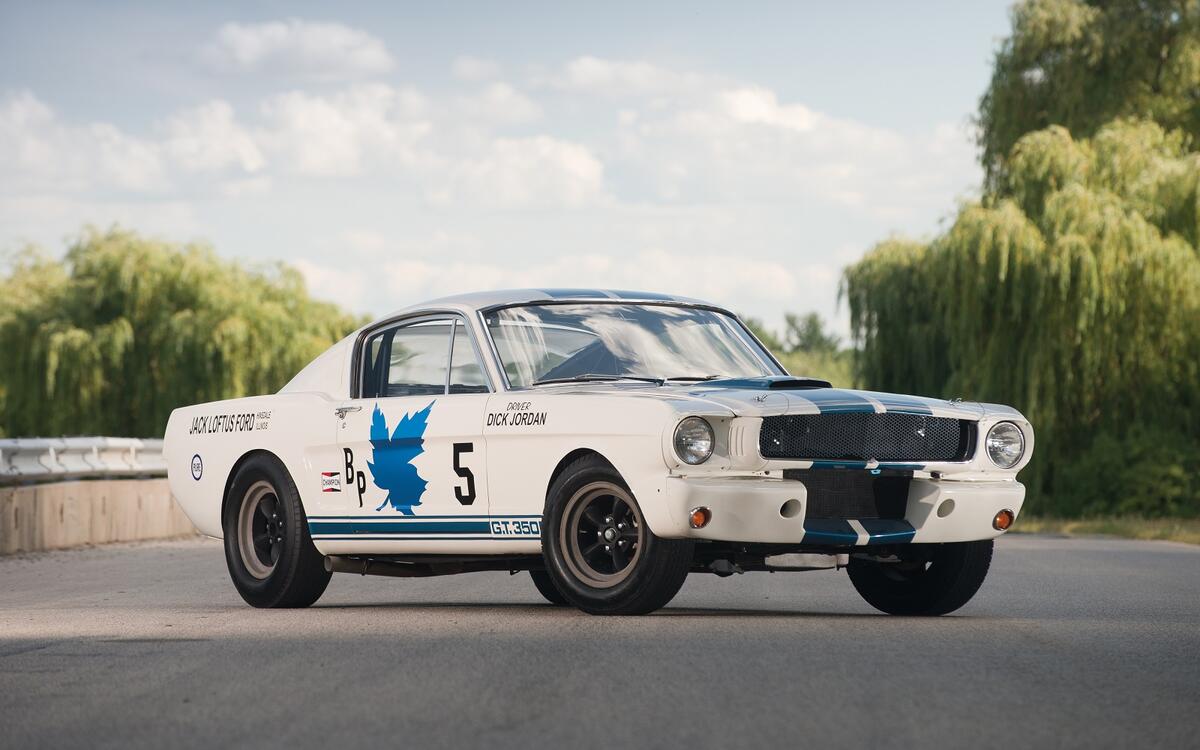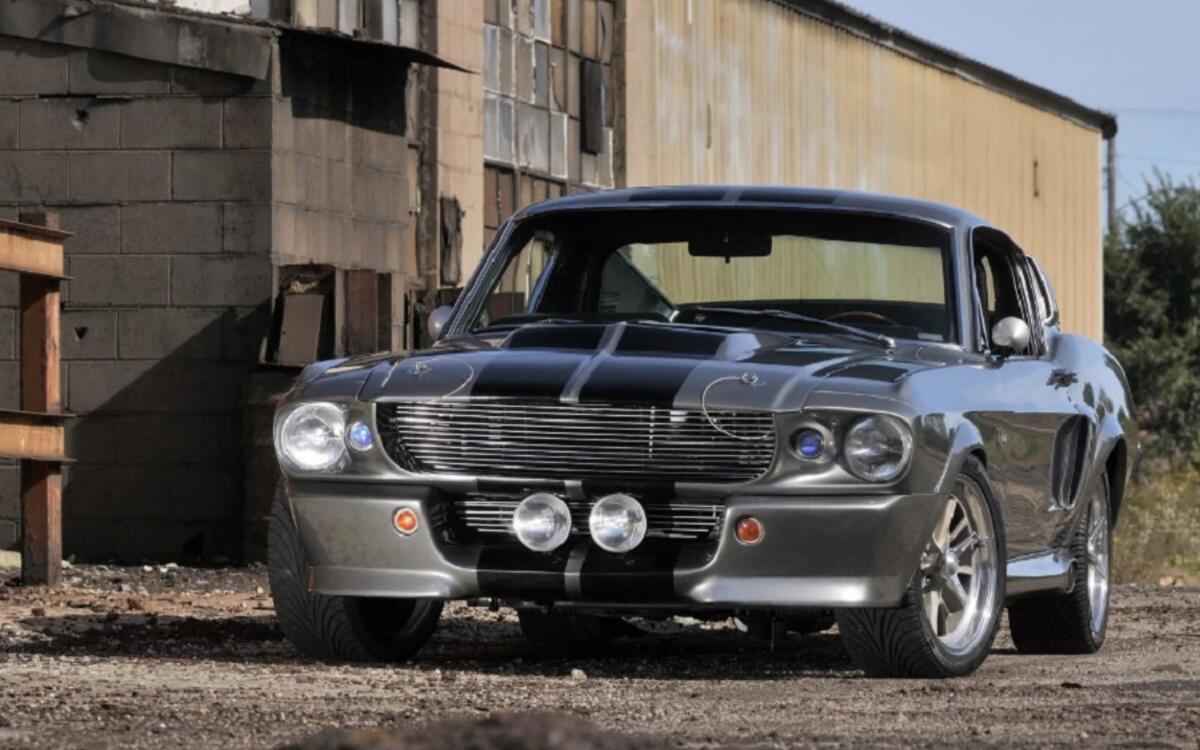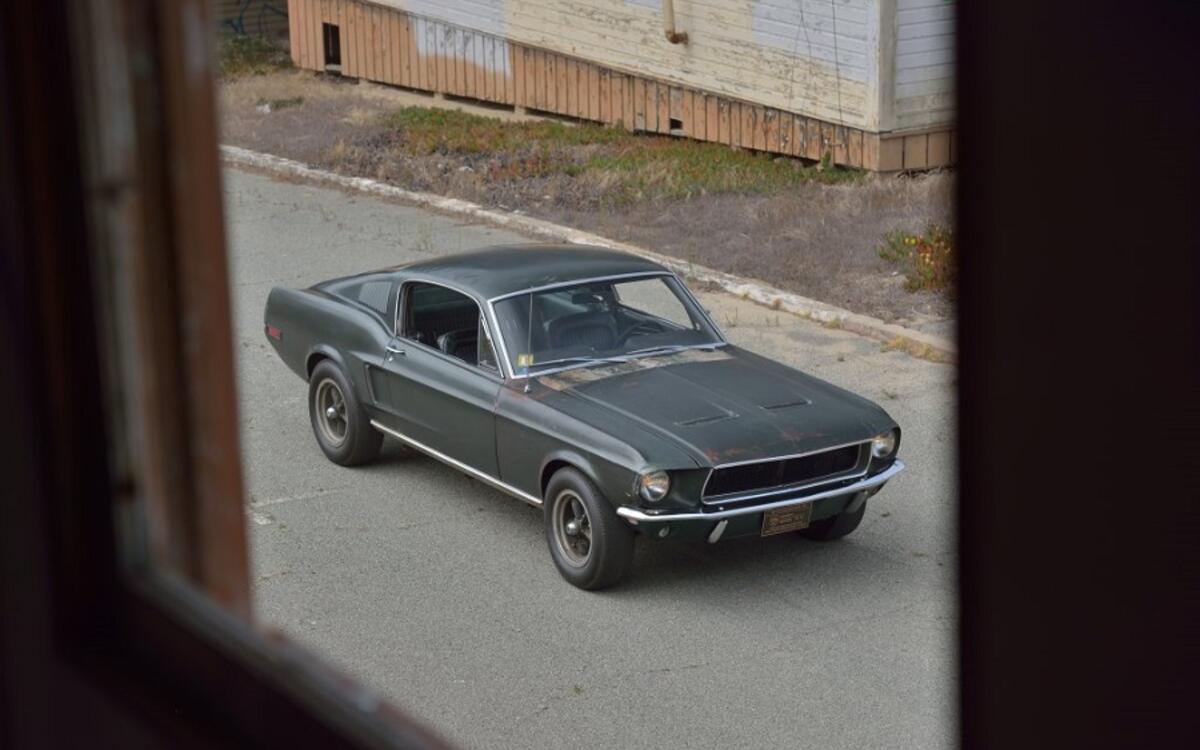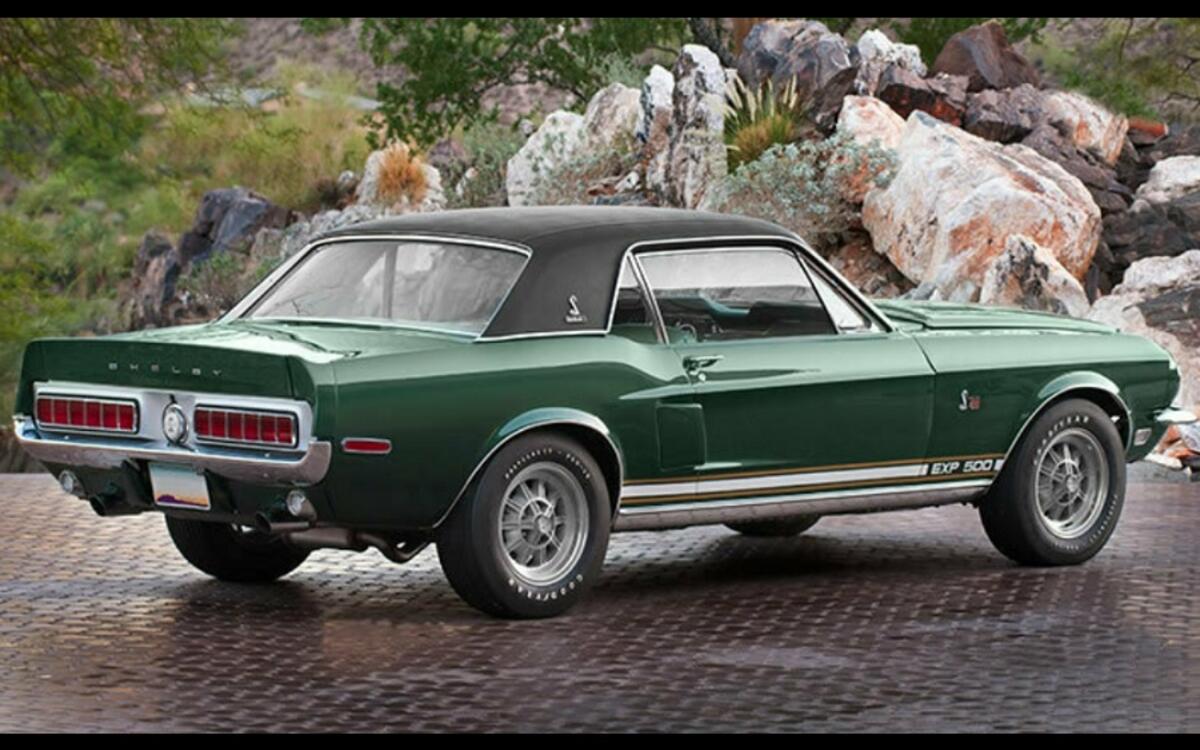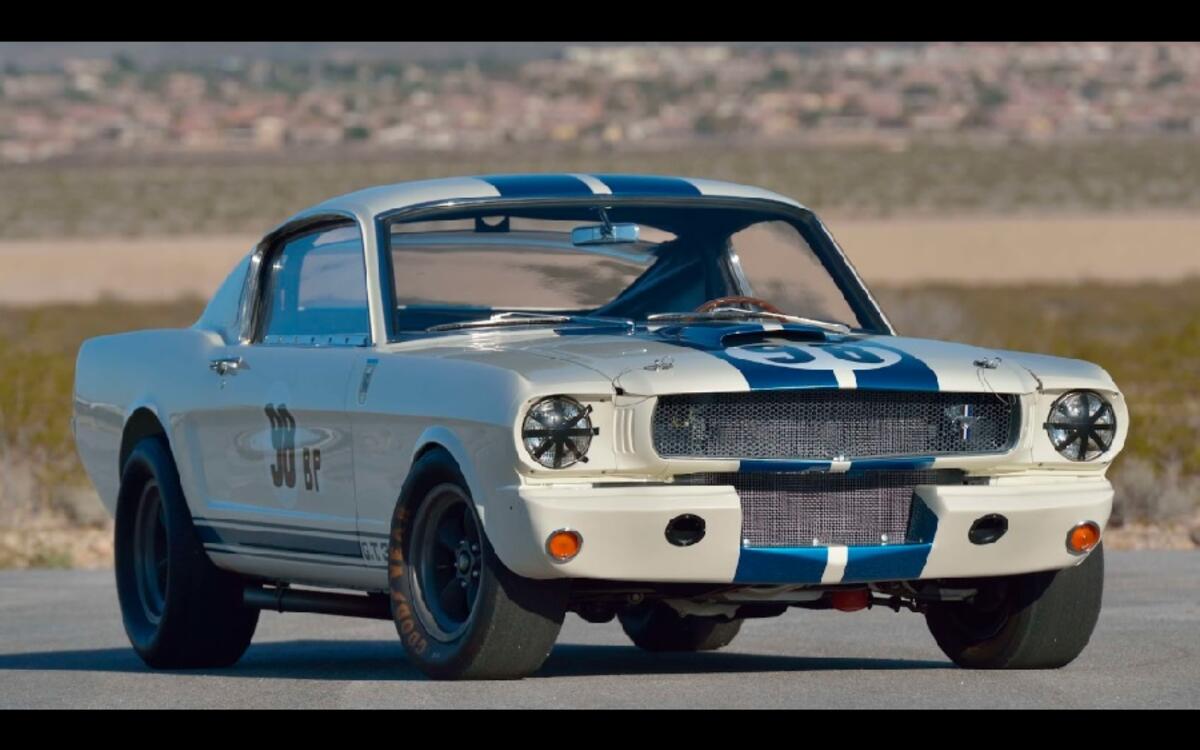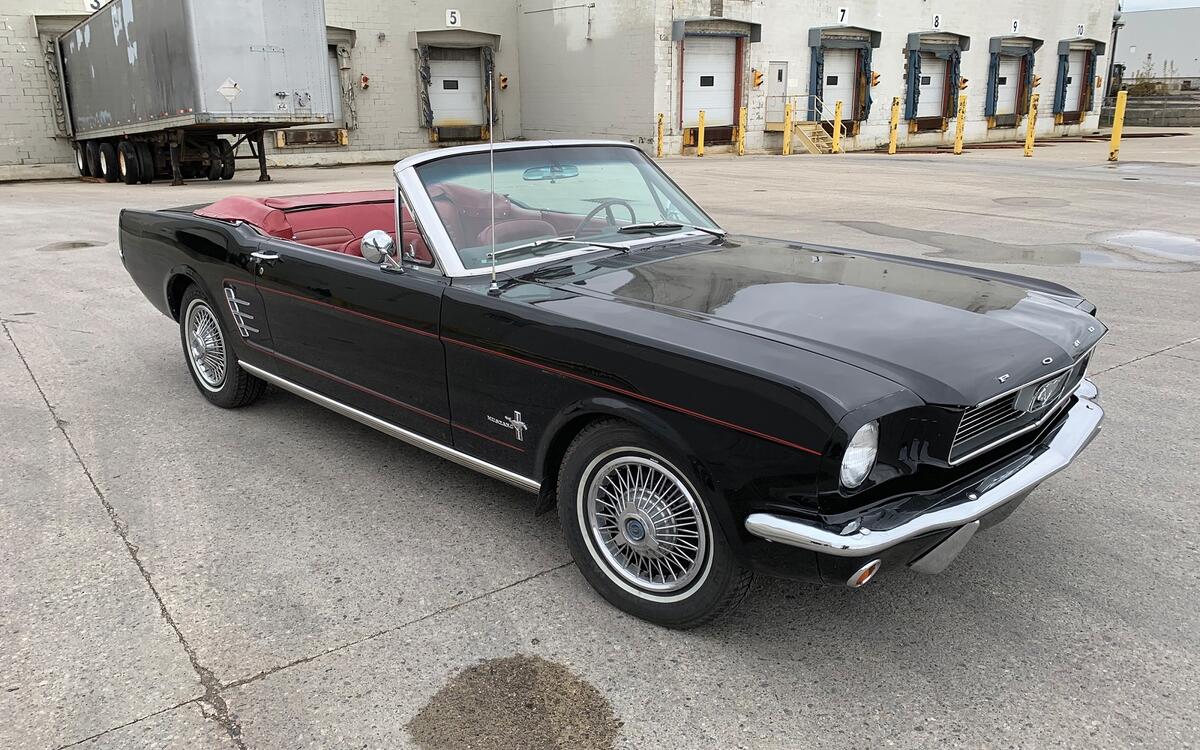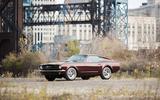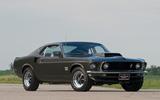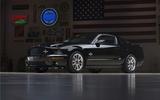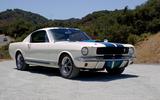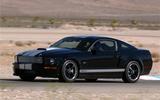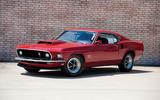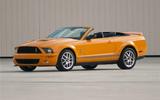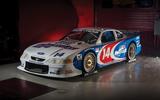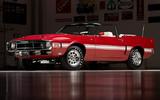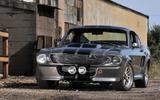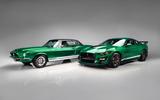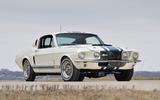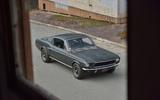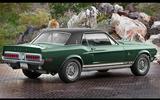 Slide of
Slide of
Ford built the Mustang empire on three pillars: performance, style and affordability.
One of the Mustang’s main selling points has almost always been that it lets enthusiasts put a V8-powered coupe or convertible in their garage for about the same price as a family car. Those willing to settle for six or four cylinders can get away with spending even less. The Mustang remained relatively affordable as it transitioned into a classic car but all it takes is a verified racing pedigree or a solid Hollywood connection to pelt its price into Bugatti Chiron territory – and sometimes even higher.
As we wait to see if the original Shelby GT350 R prototype surpasses the GT that famously starred in Bullitt, we’re looking at some of the most expensive Mustangs ever to cross the auction block. Note the prices listed in this story include the buyer’s fee auction houses add to the final prices when applicable.
 Slide of
Slide of
1964 Mustang Shorty prototype – $511,500 (2015)
Built in 1964, this one-of-a-kind prototype is not the most expensive Mustang ever sold but it’s certainly one of the more fascinating examples to cross the auction block. It was built by Dearborn Steel Tubing Industries to explore what a two-seater version of the original Mustang would look like. This wasn’t unprecedented; Ford briefly considered releasing the model with two seats but it selected a four-seater layout to reach a wider audience. In hindsight, this was the right decision to make.
With the help of Ford, designer Vincent Gardner cut 16in from an early Mustang prototype’s wheelbase, kept the stock front end and replaced the sheet metal after the windshield with new glassfibre panels he drew and helped make. Executives liked the nimble coupe, and they displayed it at events across America, but they ultimately told Gardner they had no intentions of expanding the Mustang range. He stole it before Ford could crush it, hid it, and it was ultimately sold to a collector who kept it for 47 years. Fully restored, the Mustang Shorty sold for $511,500 in 2015 (roughly $553,000/£453,000 in 2020).
 Slide of
Slide of
1969 Mustang Boss 429 – $550,000 (2013)
Ford built the Mustang Boss 429 during the 1969 and 1970 model years to homologate its 370bhp V8 in NASCAR racing. Approximately 859 units were made for the 1969 model year, and they normally trade hands for over a quarter of a million dollars, but this example earned the seller $550,000 (about $605,000/£497,000 in 2020) at a 2013 Mecum auction because it had 902 documented miles. It was still fitted with the original plastic wrap on the seat belts, the steering wheel and the passenger seat.
Mecum explained the original owner’s son started removing parts from the engine bay to install a solid lifter cam. He was out of town; when he returned, he instructed his son never to touch the car again and inexplicably left the partially disassembled Boss to sit in his garage. An enthusiast put it back together decades later and chose to keep it in like-new condition instead of putting more miles on it.
 Slide of
Slide of
2008 Shelby GT500KR – $550,000 (2008)
In 2008, noted American collector Ron Pratte paid $550,000 (about $654,000/£537,000 in 2020) for the first 2008 Shelby GT500KR off the line. 999 additional units were planned but Ford and Shelby decided to send VIN 001 to a Barrett-Jackson auction and donate the proceeds from the sale to the Juvenile Diabetes Research Foundation. The first GT500KR stood out with a unique black-on-black paint job and a glass roof that wasn’t available on the remaining examples.
Barrett-Jackson sold it again in 2015 for $203,500 (about $219,000/£180,000 in 2020).
 Slide of
Slide of
1965 Shelby GT350 Paxton prototype – $572,000 (2014)
Shelby enlisted the help of Studebaker-owned Paxton to supercharge the GT350. The results were stunning: the V8’s output grew from 302 to 436bhp and the Mustang could beat a 289 Cobra down a drag strip. Chassis number 5S425 is one of two 1965 prototypes factory-equipped with a supercharger.
After testing it, Paxton shipped the GT350 to a Ford dealer in Michigan who sold it to a private owner in 1966. It changed hands again in 1967 and it kept its original engine until it received a naturally-aspirated V8 during the 1970s. The car’s third owner purchased it in 2005 and immediately began searching for the eight-cylinder it was built with. He found it, bought it, rebuilt it and made the GT350 original again. RM Sotheby’s sold it for $572,000 (roughly $619,000/£507,000 in 2020) at a 2014 auction.
 Slide of
Slide of
2007 Shelby GT – $600,000 (2007)
Barrett-Jackson offered the first 2007 Shelby GT with no reserve during its 2007 Scottsdale sale. It sold the coupe for $600,000 (approximately $742,000/£608,000 in 2020) and donated the proceeds from the sale to the Carroll Shelby Children’s Foundation. VIN 001 was finished in black with silver stripes and it was fitted with black 18in wheels so it looked like a regular-production model when viewed from the outside. Inside, it received a metal plaque identifying it as the first of its kind.
 Slide of
Slide of
1969 Mustang Boss 429 – $605,000 (2007)
This is one of the first 50 examples of the Mustang Boss 429 that Ford built largely by hand for its most important dealers. Barrett-Jackson noted it’s fitted with the rare, 375bhp 820-S NASCAR engine and a specific suspension, among other equipment that helps it stand out from later cars. It sold for $605,000 in 2007, which represents approximately $748,000/£612,000 in 2020. In hindsight, it was an awful investment. RM Sotheby’s sold the same car for $275,000 (about $302,000/£247,000) in 2013.
 Slide of
Slide of
2007 Shelby GT500 – $648,000 (2006)
Ford celebrated the 493bhp 2007 Shelby GT500 as the most powerful factory-built Mustang ever. Barrett-Jackson sold the first example built for the public at its 2006 Scottsdale auction for $648,000 (around $824,000/£674,000 in 2020), an unusually high sum justified (as has often been the case since) by the fact that the sale’s profits were donated to a charity called Carroll Shelby Children’s Foundation.
Wealthy enthusiasts jump at the opportunity to own an early example of a desirable car because Ford usually saves the first 50 units it makes for members of the Ford family, high-ranking executives and a small number of hand-picked VIPs. Serial Mustang buyer Ron Pratte took delivery of the GT500 with VIN 001 in 2006 and later purchased 002 and 005 as well. He initially kept the first example but sold the other two – a coupe and a convertible (pictured) finished in a matching shade of orange – as a pair in 2012. The duo went for $90,750, which represents approximately $101,000/£82,000) in 2020.
 Slide of
Slide of
1995 Roush Mustang Cobra SCCA Trans Am – $720,000 (2018)
Roush Racing built Mustang-like silhouette cars for the Trans Am series organized by the Sports Car Club of America (SCCA). Chassis number 32 has a murky past, somewhat surprisingly, but RM Sotheby’s believes it was raced by Tommy Kendall in 1995 and kept as a back-up car in 1996 and 1997. Michael Dingman purchased it in 1999 because he drove a similar Mustang in the early 1990s and added it to his collection, though he never raced it or even drove it. It was nonetheless maintained on a regular basis, which partially explains why someone paid $720,000 (nearly £592,000) for it in 2018.
 Slide of
Slide of
1965 Shelby GT350 R – $720,000 (2018)
Shelby made 34 race-prepared GT350 Rs for 1965 so it’s one of the most sought-after Mustang variants and also one of the most expensive ones. It’s considered by many collectors to be the holy grail.
Wearing chassis number 5R096, this car spent years winning races across Canada before moving to the United States and receiving a full restoration. It ultimately ended up in the hands of a collector in Switzerland. Its well-documented history is full of first-place finishes and it’s in excellent condition so it sold for $720,000 (approximately £590,000) at an RM Sotheby’s auction in 2018.
 Slide of
Slide of
1969 Shelby GT500 Convertible – $742,500 (2008)
Shelby’s GT500 achieved cult status in the Mustang community but its value hasn’t soared to the mid-six-digit range yet. This stunning red example is the exception to the rule because it was purchased new by none other than Carroll Shelby (1923-2012) and it remained in his possession until 2008.
He commissioned a thorough, five-year restoration from Shelby expert Jim Cowles right before the sale. Barrett-Jackson sold it with Shelby’s blessing for $742,500 (around $883,000/£725,000 in 2020) in 2008. It was sold again in 2015 but, without Shelby present to hand over the keys and sign the title, bidding stopped at $550,000 (approximately $594,000/£488,000).
 Slide of
Slide of
1965 Shelby GT350 R – $770,000 (2015)
Shelby spent over six months building this GT350 R, which was assigned chassis number 5R108. It went straight to the track, like most GT350 Rs, and it won a long list of events including the 1966 Southern Polar Grand Prix. Bill Steele should have driven it in the race but he backed out at the last minute because the car intimidated him. It was put in the hands of Pedro Rodriguez instead.
5R108 raced in Mexico and in the United States until it was put in storage in 1972 and largely forgotten about. It was towed out and restored during the 1980s and it raced again in vintage events. Its illustrious history helped it sell for $770,000 (around $832,000/£681,000 in 2020) at a 2015 RM Sotheby’s auction. It somewhat surprisingly ended up on the auction block again a year later where it sold for $742,500.
 Slide of
Slide of
1965 Shelby GT350 R – $984,500 (2014)
Every GT350 R is worth supercar money but the bidding war over chassis 5R538 was unusually heated. It’s described by historians and enthusiasts as the winningest Shelby ever because, with Charlie Kemp behind the wheel, it won 17 straight races in 1968 and 1969 and amazingly reached 184mph down the Daytona track’s long straight. Kemp sold it, bought it back and gave it a comprehensive restoration.
RM Sotheby’s sold it for $984,500 (about $1 million/£800,000 in 2020) at a 2014 auction. The sale included a big pile of period photographs, invoices, articles about the car and authentication documents.
 Slide of
Slide of
1965 Shelby GT350 R – $990,000 (2012)
There is another GT350 R on this list but it’s not like the others. Chassis number 5R106 was purchased new for $6105 (about $50,000/£41,000 in 2020) and entered in a handful of smaller races by a privateer named Richard Jordan. He parked it in the early 1970s and kept it in storage until he sold it in 1987.
It was restored and raced sparingly during the subsequent decades. While it can’t boast about a mile-long list of first-place finishes, its claim to fame is being one of the most original GT350 Rs left. It had only 4800 miles on its odometer when RM Sotheby’s sold it for $990,000 (about $1.1 million/£900,000 in 2020) in 2012. It was still wearing its original Plexiglas windows and the wheels fitted at the factory.
 Slide of
Slide of
1967 Ford Mustang “Eleanor” – $1.1 million (2013)
Nicknamed Eleanor, the 1967 Ford Mustang that starred in the 2000 movie Gone in 60 Seconds has spawned countless replicas over the past two decades. Authenticity is sought-after and one of the three so-called hero cars used in scenes involving the film’s actors sold for $1,060,000 (about $1.1 million/£900,000 in 2020) at a Mecum auction in 2013.
Even the auctioneers were surprised by the result. It’s not a genuine GT500, according to Hagerty. It’s a standard 1967 fastback with numerous suspension, body and mechanical modifications made specifically for the movie.
 Slide of
Slide of
2020 Shelby GT500 – $1.1 million (2019)
Barrett-Jackson chairman and CEO Craig Jackson purchased the very first 2020 Shelby GT500 for $1.1 million (about £900,000) at a 2019 auction. Ford sent an orange pre-production model across the stage because the sale took place before production began but it gave Jackson the opportunity to configure VIN 001. He requested a shade of dark green not available on the regular-production model that draws a visual parallel with the 1968 Shelby EXP 500 prototype (known as the Green Hornet) he also owns.
The Juvenile Diabetes Research Foundation received the proceeds from the sale, which partly explains why VIN 001 skyrocketed into the seven-digit stratosphere. Pricing for the supercharged, 749bhp GT500 starts at $72,900 (around £60,000) in the United States.
 Slide of
Slide of
1967 Shelby GT500 Super Snake – $2.2 million (2019)
Calculating this 1967 Shelby GT500 Super Snake’s value was difficult because it’s a one-off example. It was upgraded with a lightweight, 427 V8 similar to the Le Mans-winning GT40’s to help Goodyear promote its Thunderbolt line of tyres. Shelby planned to build a limited run of 50 427-powered GT500s but it cancelled the project because the car was far too expensive. Don McCain, Shelby’s former sales manager, remembered the 591bhp Mustang would have cost twice as much as a standard GT500, which started at $4195 in 1967 (about $32,000/£26,000 in 2020). It consequently remained a one-off.
The special place it holds it Shelby history convinced an enthusiast to pay $1,378,000 for it at a Mecum auction in 2013. The auction house sold it again for $2.2 million – twice the initial estimate; about £1.8 million – in 2019.
 Slide of
Slide of
1968 Mustang GT – $3.7 million (2020)
The most expensive Mustang ever sold at an auction is also the most famous one. An anonymous collector paid $3,740,000 (about £3 million) including auction fees for the GT driven by Steve McQueen (1930-1980) in the 1968 movie Bullitt. It’s never been restored, it wears minor dents and its seats are torn, which increases its appeal. Mecum noted the camera mount installed during filming is still fitted to the lower body.
New Jersey resident Robert Kiernan paid $6000 for the GT in 1974 (about $31,000/£25,000 in 2020) and his wife spent years driving it daily. McQueen personally tried to buy it several times during the late 1970s but Kiernan refused to sell it. He parked it with 65,000 miles on the odometer when the clutch needed to be replaced in 1980 and went to significant lengths to keep it out of the public eye. His son Sean got it running after his death in 2014 but wisely chose not to give it a full restoration. One heck of a family heirloom to inherit...
 Slide of
Slide of
Unsold: 1968 Green Hornet prototype – $1.8 million (2013)
Shelby destroyed most of the prototypes it built (and most of the cars it raced) during the 1960s. One of the few surviving test mules is the EXP-500, a notchback nicknamed Green Hornet. Barrett-Jackson noted it was fitted with a Conelec fuel-injection system, an independent rear suspension and a unique rear disc brake setup, among other experimental features. Many assumed it had been destroyed until it unexpectedly resurfaced in the hands of Fred Goodell, Shelby’s chief engineer in the 1960s. He had spent countless hours tweaking it with Carroll Shelby and managed to save it from the crusher.
Bidding reached $1.8 million in 2013 (about $2 million/£1.6 million in 2020) but the reserve wasn’t met. Craig Jackson, the collector who owns it in 2020, had it completely restored. His collection also includes Lil’ Red, the only other Mustang notchback modified by Shelby. It’s undergoing a thorough restoration.
 Slide of
Slide of
One to watch: 1965 Shelby GT350 R prototype (2020)
One of the most historically significant Mustangs will cross the auction block in July 2020. Built in early 1965, chassis number 5R002 is the first R-spec GT350 built, the first one entered in a race and the first one to win. It was simultaneously used as a test bed that allowed Shelby to develop the 34 examples of the GT350 R it built for customers, a demonstrator that helped the company sell them and a press car.
It raced on and off until 1972, when it was parked in Mexico and largely forgotten about. It was saved in 1989, brought back to the United States, sold a number of times, displayed in a Colorado museum for 14 years and finally restored. Collectors will have the opportunity to add this GT350 R to their collection at Mecum’s 2020 Indy sale. No pre-auction estimate has been published but a seven-digit price is likely and some historians quietly suggest it could end up selling for more than the Bullitt car.
 Slide of
Slide of
What to pay? (2020)
The aforementioned prices are extreme examples of what it costs to get into the Mustang hobby. They correspond to rare, historically-significant models prized for their racing pedigree or their connection with Hollywood. If neither matter to you, there’s no reason to pay Ferrari money for a vintage Mustang.
Clean, early models that haven’t taken a trip through Shelby’s workshop normally trade hands for five-digit sums. The V8-powered 1966 convertible shown here was sold for $22,400 (about £18,000) in 2019 by RM Sotheby’s, for example. Six-cylinder cars are worth less, projects are far cheaper and later models (like the Mustang II) can be found for less than $10,000 (approximately £8000) in the United States.
It takes a racing pedigree or a Hollywood connection to send the Mustang into Chiron territory
Advertisement


